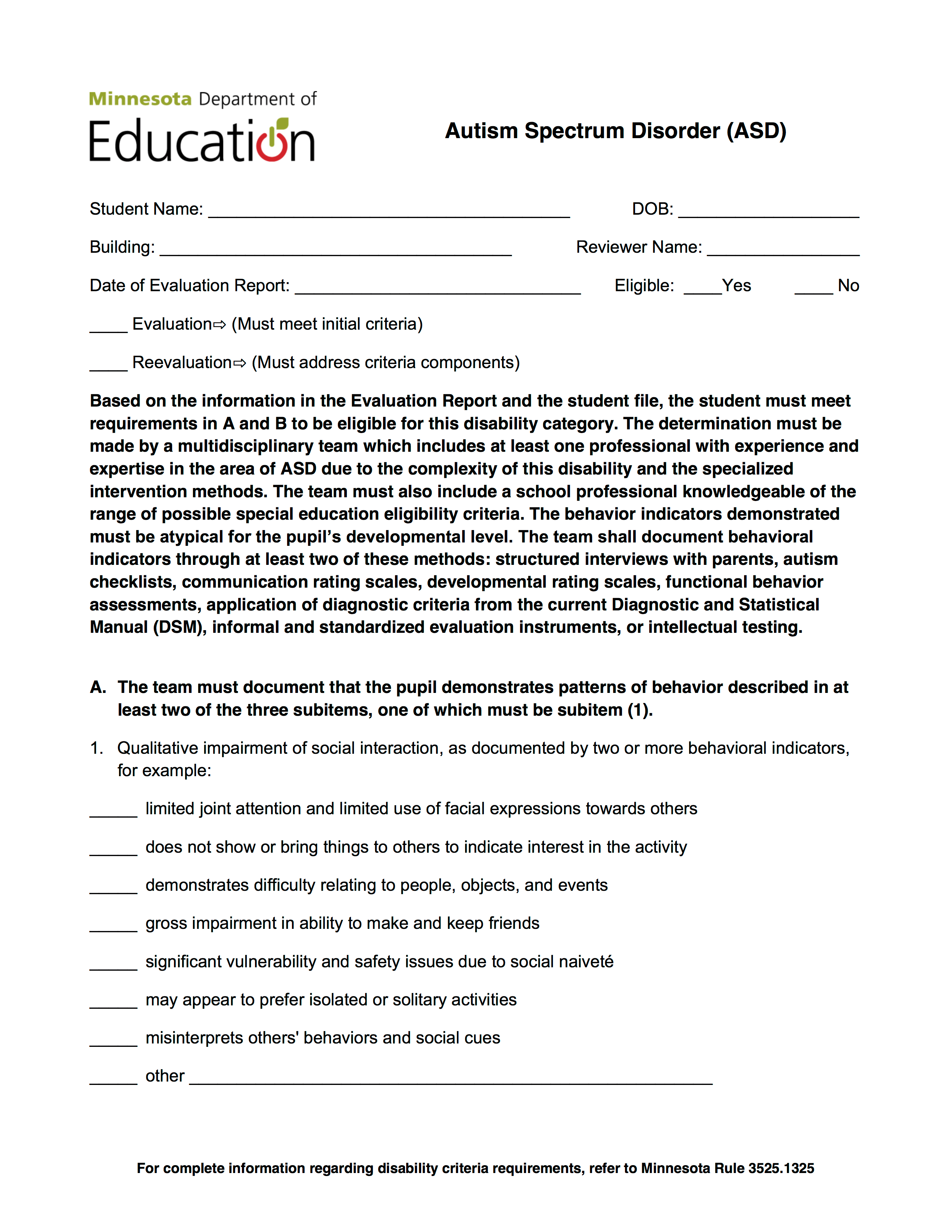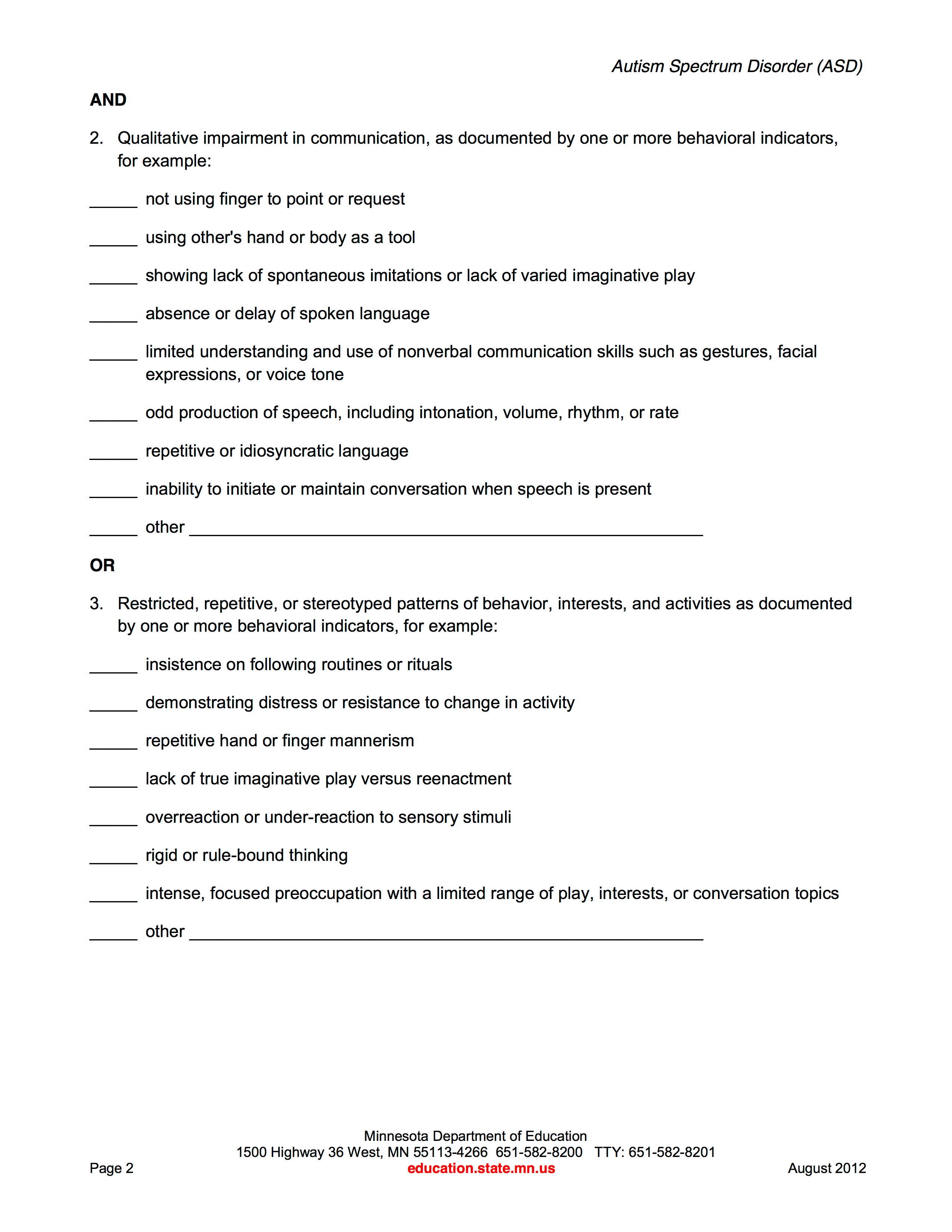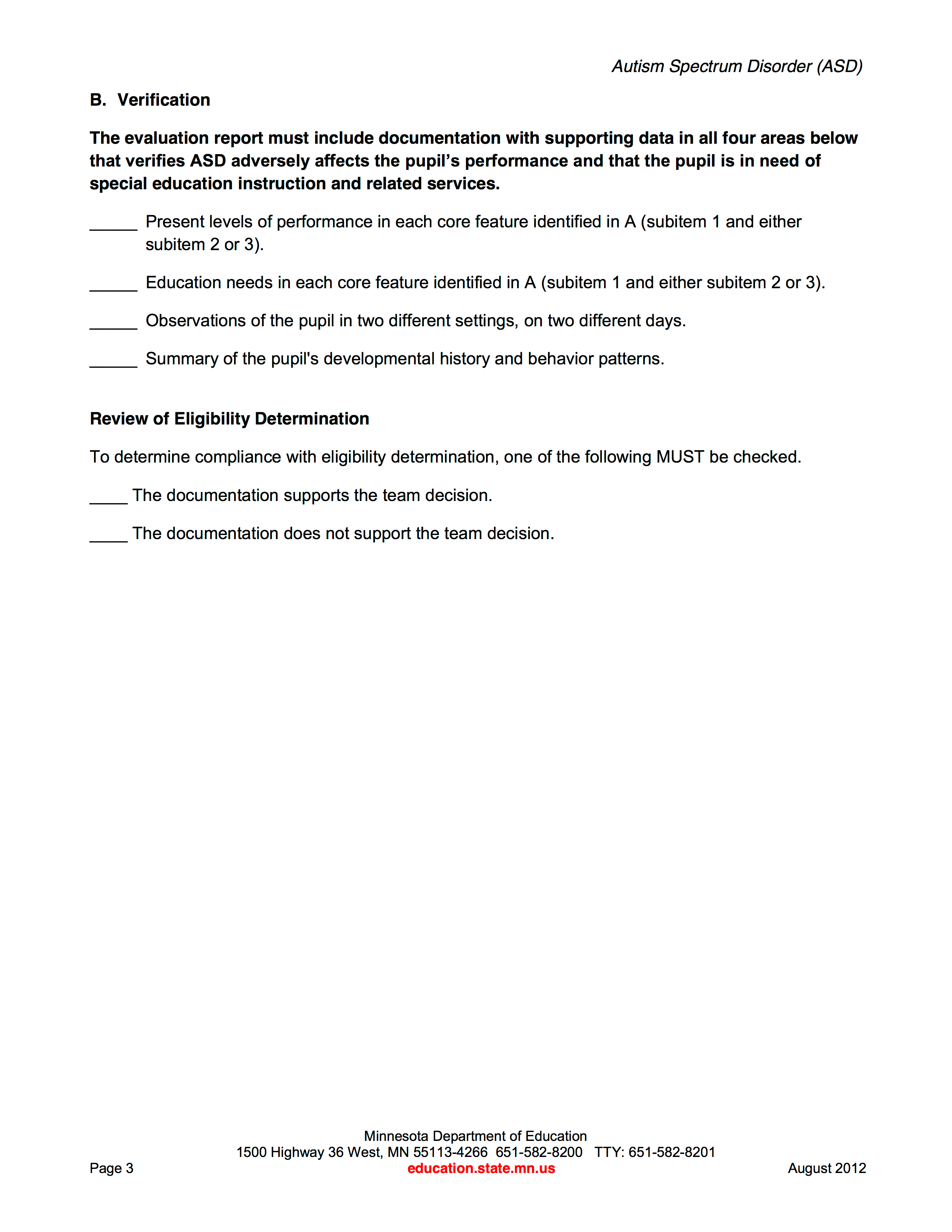
Autism
|
Disability Label & Prevalence |
Definition |
General Characteristics |
Identification & Assessment |
Educational Approaches |
Educational Placement Alternatives |
|
Autism Spectrum Disorder 1 in 68 are on the Spectrum (2014) |
IDEA - A developmental disability affecting verbal and nonverbal communication and social interaction, generally evident before the age of 3, that adversely affects a child’s educational performance. |
Engagement in repetitive activities and stereotyped movements, resistance to environmental change or change in daily routines, and unusual responses to sensory experiences. |
Screening: Checklist for Autism in Toddlers (CHAT), Modified Checklist for Autism in Toddlers (M-CHAT), Social Communication Questionnaire (SCQ), Autism Spectrum Screening Questionnaire (ASSQ) Diagnosis: Childhood Autism Rating Scale (CARS), Autism Diagnostic Interview – Revised (ADI-R) and Autism Diagnostic Observation Schedule (ADOS), Asperger Syndrome Diagnostics Scale (ASDS) |
Early Intensive Behavior Intervention: learn communication, language, and social skills so they can successfully participate in general education classrooms. Applied Behavior Analysis: provides scientific approach to designing, conducting, and evaluating instruction based on empirically verified principles describing functional relationships between events in the environment and behavior change. Visual Supports: picture activity schedules, social stories. |
General Education Classroom Resource Room Programs Separate Classrooms Special schools Residential Facilities. |
|
Description of 2 evidence-based strategies |
Social stories: Personalized stories that systematically describe a situation, skill, or concept in terms of relevant social cues, perspectives, and common responses, modeling and providing a socially accepted behavior option. (Ryan, Hughes, Katsiyannis, McDaniel, & Sprinkle, 2011) |
|
Practitioner Based Article related to this area: Include reference and summary of the article. |
ASD Nest Curriculum: ASD Nest classrooms provide the same grade-level academic curriculum as other classrooms in their schools. In addition, they utilize selected instructional strategies and behavioral supports designed especially for children with ASD and other exceptional conditions. (Koenig, Bleiweiss, Brennan, Cohen, & Siegel, 2009) |
MN Eligibility Checklist


